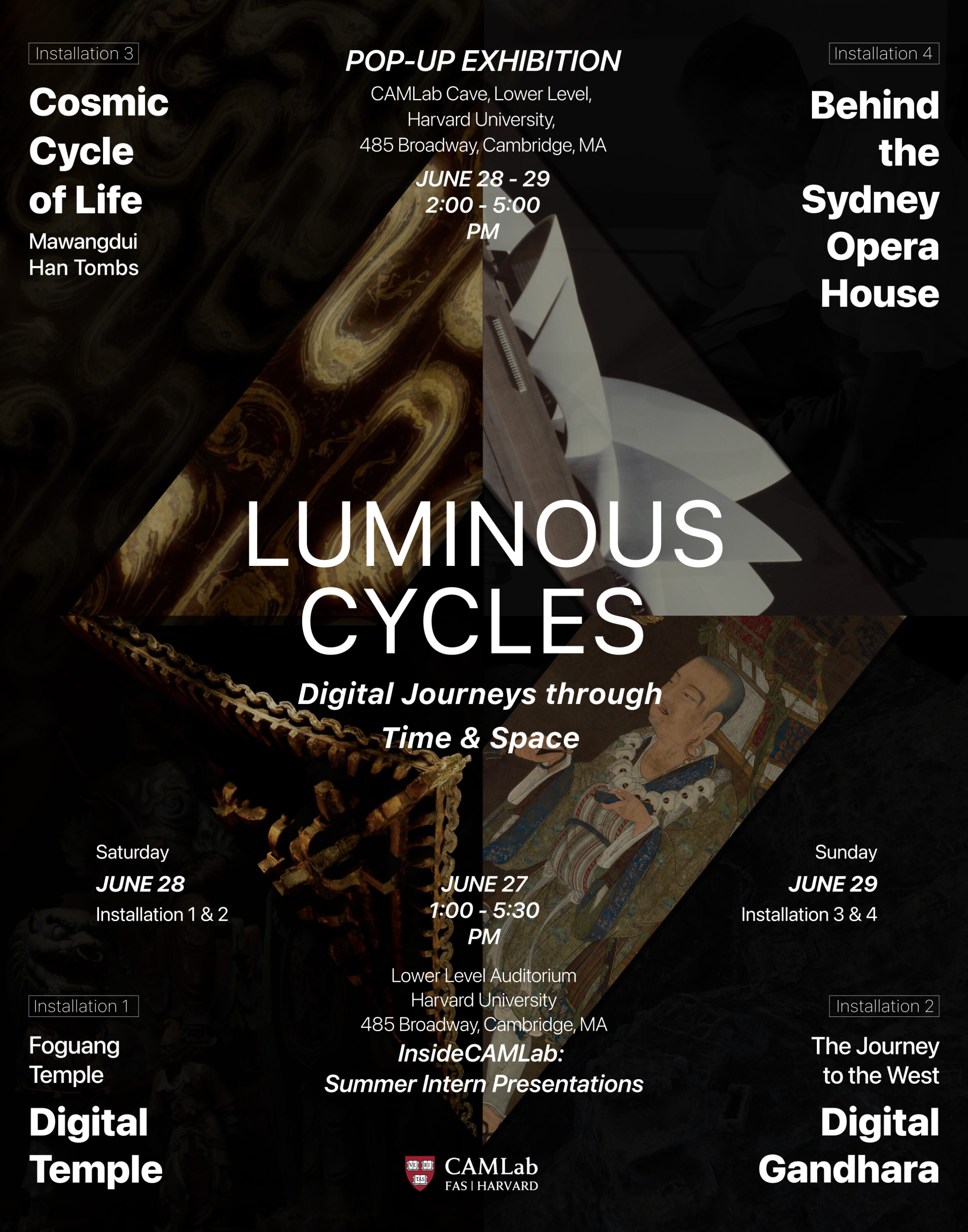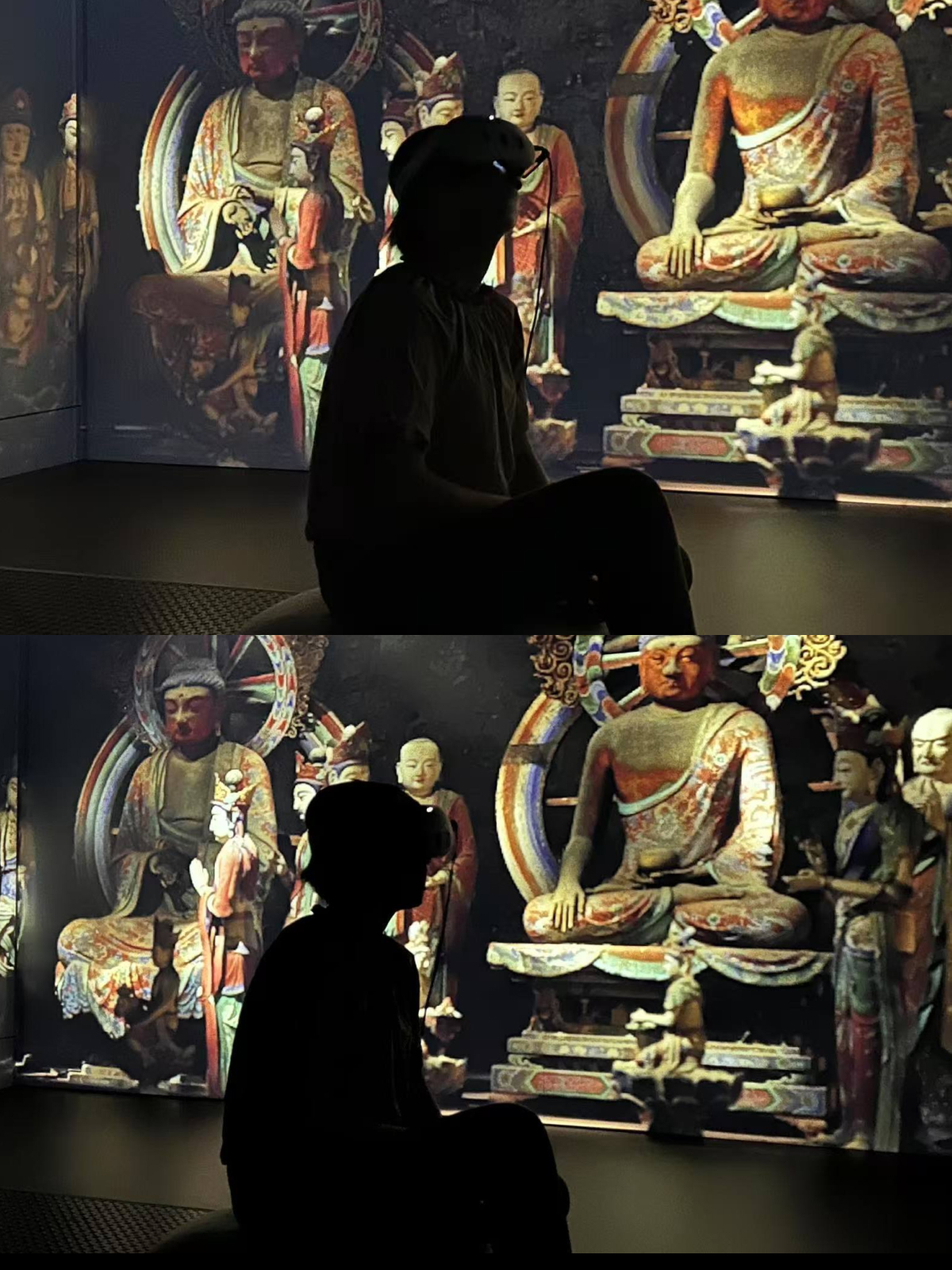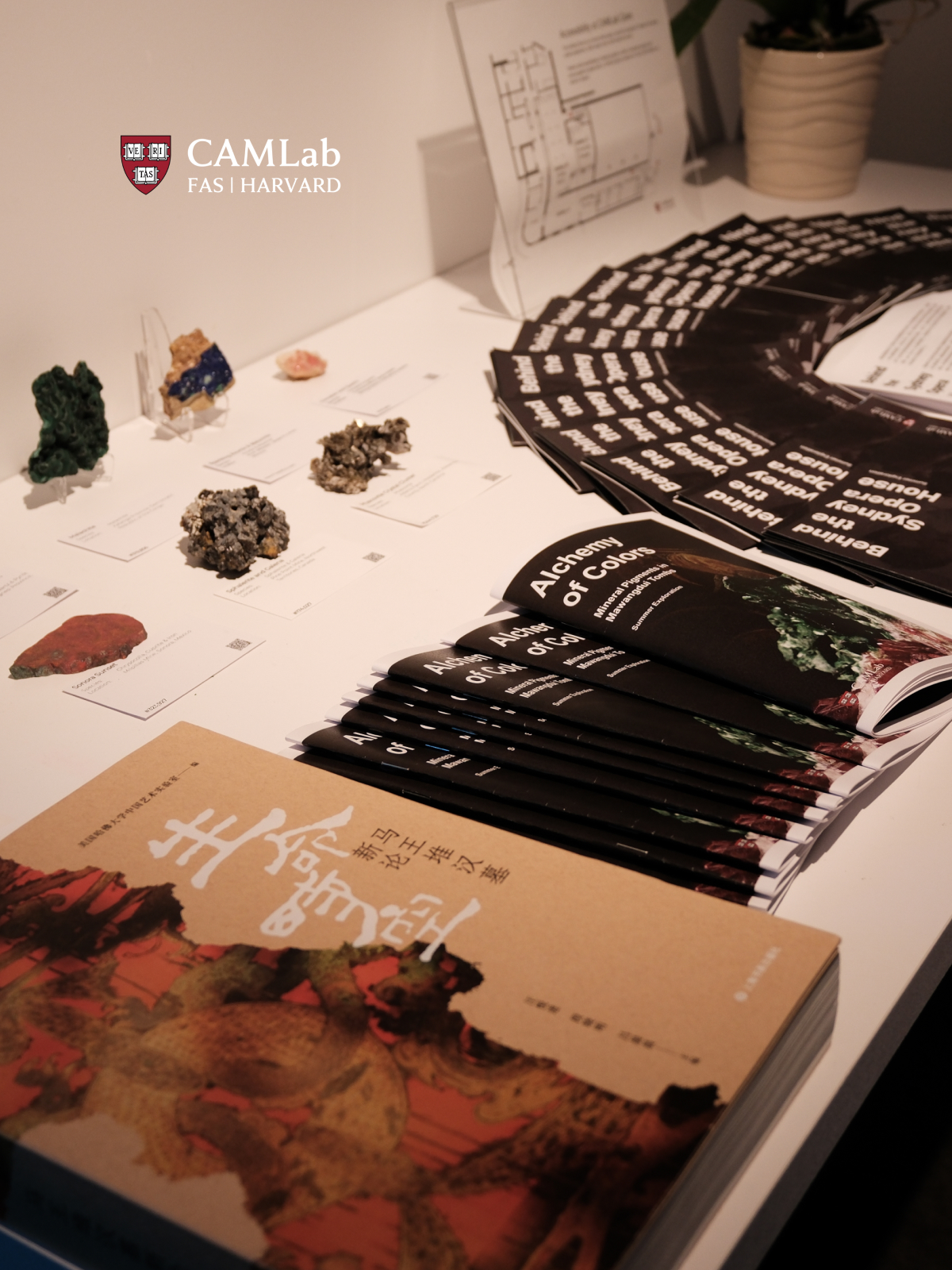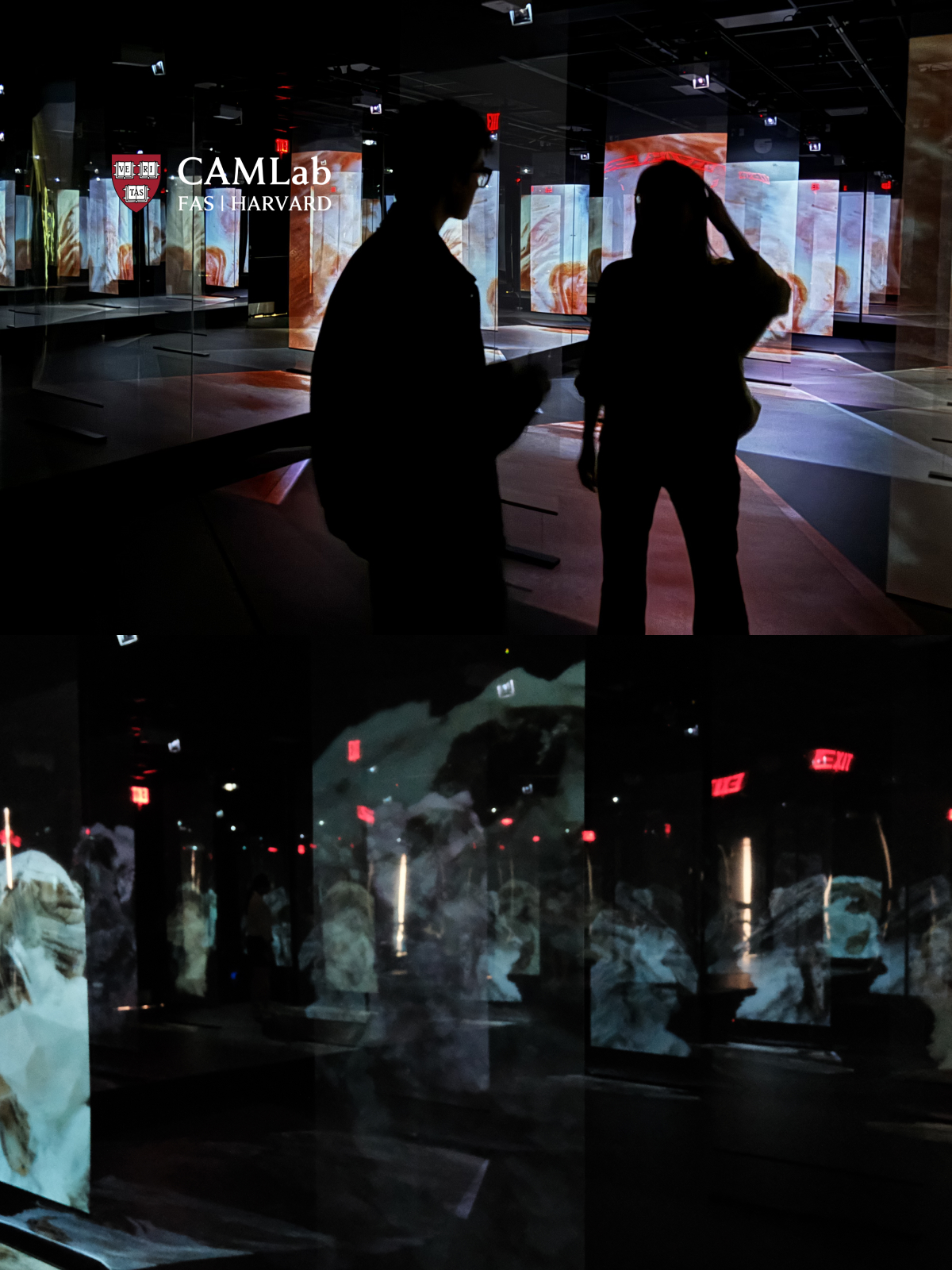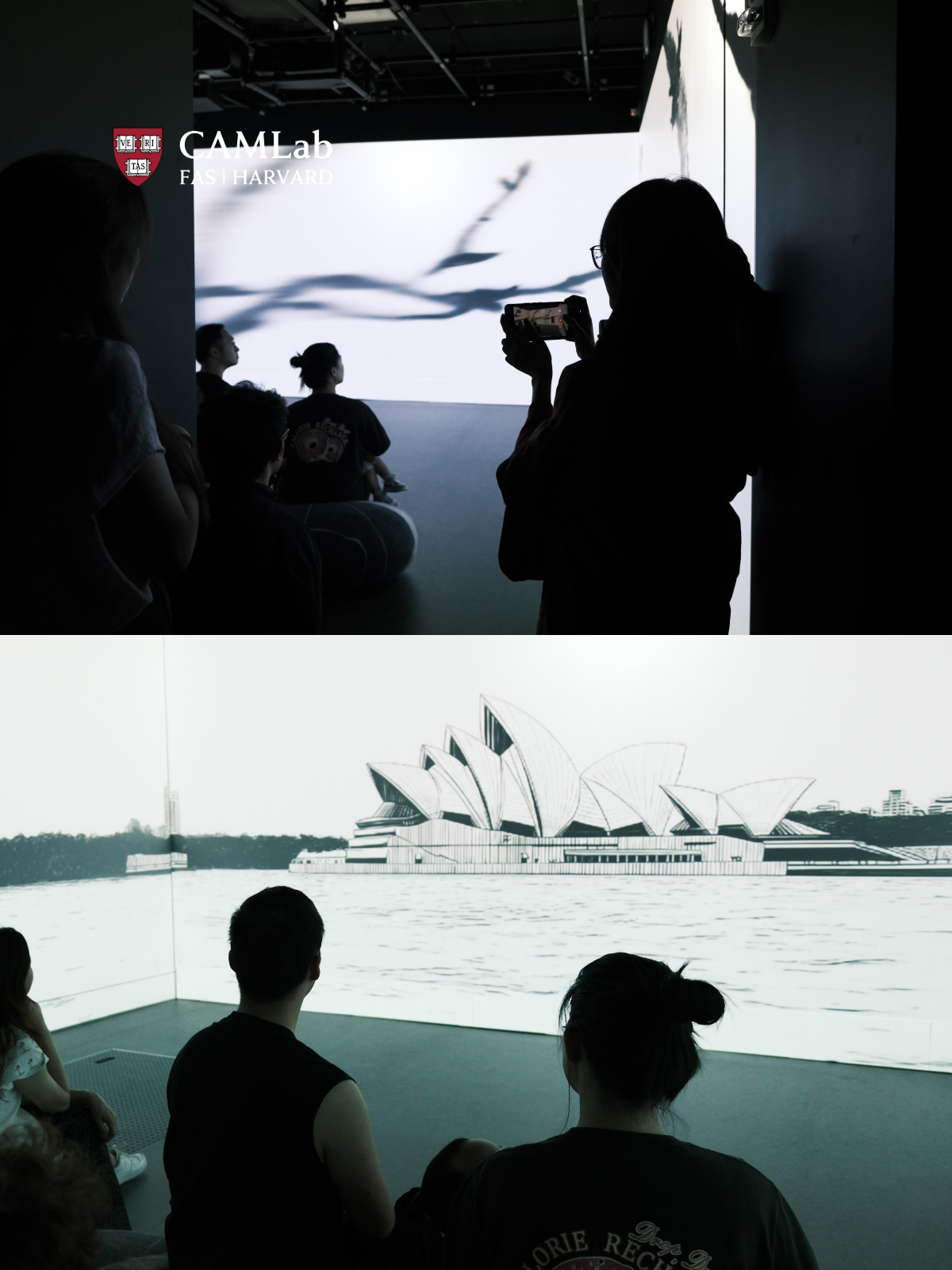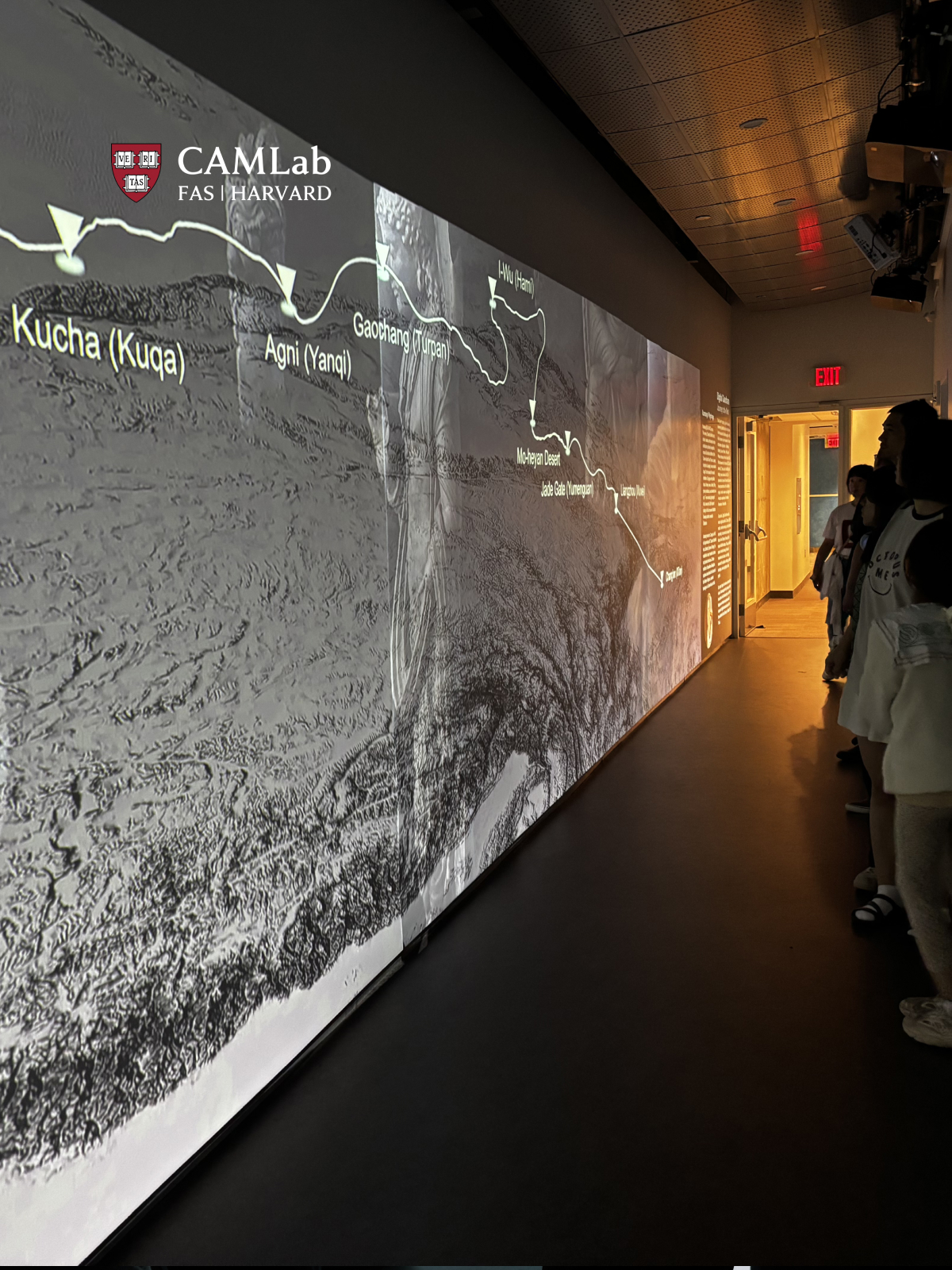June 28 (Sat) & June 29 (Sun) 2:00–5:00 PM ET
Lower Level Auditorium, 485 Broadway, Harvard University
“Luminous Cycles: Digital Journeys Through Time and Space” features four multimedia art installation works, covering significant cultural landmarks — from the Han Dynasty’s Mawangdui to the Gandhara Buddhist sites, from the Tang Dynasty’s Foguang Temple to the 20th-century Sydney Opera House.
Co-developed by an interdisciplinary team of artists, researchers, and technicians, the installations widely use new media techniques such as 3D modeling, VR, AR, and AI image generation.
While exploring the boundaries of academia, technology, and art, the exhibit reflects CAMLab’s continuous emphasis on digital humanities teaching and research practice, and its spirit of exploration and innovative posture in the field of global cultural heritage digitalization.
Project Info
1. Cosmic Cycle of Life: Mawangdui Han Tombs Installation
This immersive installation draws inspiration from the four-layered lacquered coffins unearthed from the Mawangdui Han tomb, envisioning a multisensory experience that explores the cosmic cycle of life, which is the underlying design logic behind the design of the coffins. The nested coffins, arranged from outer to inner layers, symbolically represent the four seasons—winter, spring, summer, and autumn—each embodying a distinct state of life. This structure resonates deeply with early Chinese cosmology as articulated by Zhuangzi:
“If we examine its beginning, it was originally not life; not only was it not life, it was not even form; not only was it not form, it was not even qi. Entangled in the dim and obscure, it changes and becomes qi; qi transforms into form, form transforms into life, and now transforms again into death—this is but the cyclical procession of the four seasons.”
Life, in this worldview, is not a linear progression but a transformation of qi—the vital breath—through phases of emergence and union, just as the seasons perpetually revolve.
Visitors journey through the four seasonal movements, each layer unfolding visual imagery inspired by the intricate iconography on the lacquered surfaces. The experience is designed as an interactive encounter: by engaging with each seasonal space, visitors activate distinct audiovisual elements corresponding to the energy and symbolic meaning of that phase. Embedded within this design is the musical cosmology of early China, which associated each season with a particular set of ritual instruments—strings for spring, bamboo pipes for summer, bronze bells for autumn, and stone chimes for winter. Visitors become participants in this cosmological performance, triggering harmonic soundscapes that express the inner rhythms of seasonal change and the evolving states of life.
The final autumnal layer evokes a realm of transcendence as well as a return to the primordial cosmos. Death, in this context, is not an ending, but a passage back to the original state of the universe and the beginning of the cycle.
Through this integration of image, sound, and interaction, the installation reanimates the cosmological imagination embedded within the material culture of Mawangdui, offering a contemplative journey into ancient Chinese understandings of life, transformation, and cosmic cycle.
2. Behind the Sydney Opera House
This project examines the architectural and philosophic connection between Danish architect Jørn Utzon and Chinese scholar Lin Yutang. Utzon was fascinated by Chinese aesthetics, finding inspiration in Lin’s writings, ancient texts like Yingzao Fashi 營造法式, and his own travels. Both figures who engaged with global cultures and civilizations, Lin and Utzon held a shared vision for what Lin called “the art of living”: a humanist ideal that seeks to recover human happiness, leisure and optimism in the face of technological progress. Through film, this project weaves together the turbulent history of the Sydney Opera House’s construction with the story of Utzon’s enduring inspiration from China and Lin. By incorporating primary sources (sketches, photographs, and videos) and original visuals generated with artificial intelligence, this project presents the Opera House as a platform for the dialogue between Utzon and Lin—one that transcends geographical and cultural boundaries.
3. Digital Temple: Foguang Temple Installation
The digital temple: Foguang Temple project is an immersive digital installation that reimagines the 9th-century Foguang Monastery through a dual experience in Virtual Reality and Augmented Reality. Foguang Monastery, located on the southern slope of Mount Wutai in Shanxi, was founded during the Tang dynasty. It is one of the oldest surviving wooden structures in China. The East Hall, built in 857, is renowned for its grand scale and remarkable preservation, earning it the title “a gem of ancient Chinese architecture.”
The VR component invites participants on an inward journey through five stages of spiritual awakening, guided by Huayan Buddhist philosophy and sensory interactions with light, breath, and sound. In parallel, the AR experience transforms Harvard Yard into a contemplative landscape where visitors uncover five symbolic fragments—architectural, philosophical, and historical—that culminate in the reassembly of the monastery in augmented space. Together, these experiences explore the interplay between perception and truth, fragmentation and unity, offering a multisensory meditation on the nature of reality and the interwoven relationship between self, space, and the sacred.
4. Digital Gandhara: Journey to the West Installation
The Digital Gandhara project focuses on preserving Buddhist art and architecture from the ancient Gandhara region, which lies in modern day northwestern Pakistan and eastern Afghanistan. Gandhara, blending Greek, Indian, Persian, and Chinese influences, thrived along the Silk Road between the 1st century BCE and 5th century CE. Now, due to instability and looting, many sites are at risk. Our presentation today will therefore focus on three important sites of the Gandhara region, in which viewers may engage in an interactive experience to immerse themselves in these sites.
To tackle this, Digital Gandhara uses modern digital tools like 3D scans, digital models, machine learning, and multimedia storytelling to document and recreate these historic sites. Bamiyan, famous for its massive Buddha statues tragically destroyed in recent decades; Taxila, a bustling center of ancient learning filled with monasteries and stupas; and Hadda, renowned for exquisite sculptures reflecting rich cultural exchanges, are key highlights of the project. Digital Gandhara creates an immersive online space where anyone—from researchers to curious visitors—can virtually explore these places.
Our project begins first with an introductory video of Xuanzang and his journey up until he reaches the Gandhara region, and then features an interactive experience with videos and digital reconstructions of our three featured sites: Bamiyan, Hadda, and Taxila.
Event Information
- Free and open to the public
- June 28 (Sat) 2:00–5:00 PM ET
1. Digital Temple: Foguang Temple
2. Digital Gandhara: Journey to the West - June 29 (Sun) 2:00–5:00 PM ET
3. Cosmic Cycle of Life: Mawangdui Han Tombs
4. Behind the Sydney Opera House - This is an in-person event.
June 28 (Sat) & June 29 (Sun) 2:00–5:00 PM ET
Lower Level Auditorium, 485 Broadway, Harvard University
